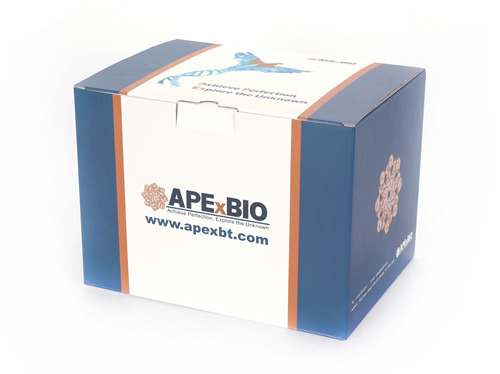Hematoxylin and Eosin Staining Kit
Hematoxylin and Eosin (H&E) staining is commonly employed to visualize tissue morphology in histopathological analysis. Hematoxylin functions by oxidation and subsequent complex formation with metal mordants (e.g., aluminum or iron salts), yielding positively charged dye complexes that selectively bind to negatively charged phosphates within cell nuclei, producing a blue or bluish-purple coloration. Eosin, an acidic dye with negatively charged ions, stains cytoplasmic components and extracellular matrix proteins pink or reddish through electrostatic interactions with positively charged amino groups. This method is extensively used for assessing cellular structures and tissue pathology in paraffin or frozen tissue sections, as well as cytological preparations. Provided solutions are ready-to-use working concentrations, compatible for direct staining protocols without further dilution.
- 1. Yonghu Chen, Wenjing Yu, et al. "Platanoside prevents ferroptosis in acute lung injury through Keap1 degradation-mediated activation of the Nrf2/GPX4 axis." Int Immunopharmacol. 2025 Nov 25;168(Pt 2):115933 PMID: 41297346
- 2. Yonghu Chen, Xilin Wu, Zhe Jiang, Xuezheng Li et al. "KAE ameliorates LPS-mediated acute lung injury by inhibiting PANoptosis through the intracellular DNA-cGAS-STING axis." Front Pharmacol. 2025 Jan 7;15:1461931 PMID: 39840115
- 3. Peifen Lu, Hongxiu Yuan, et al. "Programmatically activated DNA hydrogel microcapsules for precision therapy in inflammatory bowel disease." Theranostics 2025; 15(13):6203-6220
- 4. Yeyang Wang, et al. "Electrospun silk fibroin/fibrin vascular scaffold with superior mechanical properties and biocompatibility for applications in tissue engineering." Sci Rep. 2024 Feb 16;14(1):3942 PMID: 38365964
| Components | K1142-100 mL | K1142-500 mL |
| Hematoxylin Stain Solution | 100 mL | 500 mL |
| Eosin Staining Solution | 100 mL | 500 mL |
Store the components at room temperature protecting from light. Stable for at least 1 year. | ||








